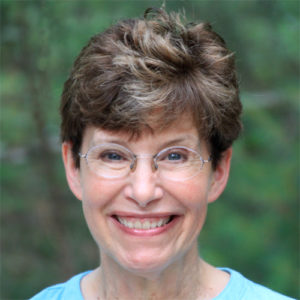No ‘Sensitive’ Way To Inflict This Level Of Environmental And Cultural Destruction.
The following letter was published in the Connecticut Examiner and is reprinted here with permission of the author Ruth Platner. Ruth is the current Chair of the Charlestown Planning Commission.
In December 2016 I traveled from Rhode Island to Connecticut to a meeting at the Old Lyme Town Hall where one of Connecticut’s US Senators, Richard Blumenthal, promised to do everything in his power to stop the Federal Railroad Administration’s plan for the “Old Saybrook to Kenyon Bypass” including tying himself to the railroad tracks.
I loved the imagery of Senator Blumenthal tied to the tracks, not because I would ever want to see him hurt (I have great admiration for the senator), but because the image showed such uncompromising opposition.
On July 16’th the Connecticut Examiner reported that both of Connecticut’s senators support the just-announced Connect NEC 2035 that implements the first phase of the Federal Railroad Administration’s NEC Future plan. However, in Senator Blumenthal’s case, no mention was made of continued opposition to the Bypass. What was offered instead was a promise from Connecticut’s US Senator Chris Murphy to be “sensitive to existing communities that live by the rail.”
I write because my community of Charlestown, Rhode Island, contains the Kenyon end of the Bypass, and the Federal Railway Administration planned less than five years ago to bisect Charlestown with new high-speed tracks that would have run from Charlestown’s western edge to its eastern edge—through the Burlingame State Wildlife Management Area; through other state and private open space and homes in Burdickville village; across farms, including a four-generation farm-to-table operation on top of Schumankanuc Hill; over Native American tribal land; through the center of the 1,112-acre Carter Preserve (owned by The Nature Conservancy); through the middle of the Revolutionary-era Amos Green Farm and adjacent properties protected by conservation easements; through federally funded Historic Columbia Heights housing; and then over Historic Kenyon— to reconnect with the existing railroad near the eastern edge of town in the Great Swamp State Wildlife Management Area. In addition, the Bypass would have crossed the National Wild and Scenic Pawcatuck River several times and was entirely within the areas of the US Fish and Wildlife Great Thicket National Wildlife Refuge and the Wood-Pawcatuck Sole Source Aquifer.
The plan was defeated back then because there is simply no “sensitive” way to inflict this level of environmental and cultural destruction.
The New Haven to Providence Capacity Planning Study that is part of Connect NEC 2035 and meant to resolve the issues of the Bypass needs a lot more than sensitivity. Before anyone even considers the issues and possible solutions to providing high-speed rail between New Haven and Providence, there needs to be a true Environmental Impact Study (EIS) that includes all impacts, such as impact the Bypass would have had on nearly 1,800 acres of permanently protected open space, 450 acres of working farms, National Register–eligible villages, a National Wild and Scenic River, and the area of a National Wildlife Refuge. All of these, and more, were omitted from the Federal Railroad Administration’s Tier 1 EIS, and that is just in one small town along the Bypass.
I don’t expect Connecticut’s people and politicians to know or care about my Rhode Island town, but we are tied together along the proposed “Old Saybrook to Kenyon Bypass,” and weakened opposition anywhere along the proposed Bypass route impacts all of us. It would be very helpful if the people at the Connecticut end of the Bypass could remind Senator Blumenthal of his promise to tie himself to the tracks.

You can learn more about the author, Ruth Platner, at her profile page.
The banner image is a composite of public open space, permanent conservation easements, and Tribal conservation land shown in green. Active farms are shown in yellow. This image was created in 2016 by Cliff Vanover when Charlestown first learned about the Old Saybrook to Kenyon bypass. Visit Our Railroad Page To Learn More About Past Work To Stop The Bypass

August 3, 2021 @ 10:30 am
Seriously, why propose all this added expensive, inconvenience, and property destruction when a line already exists? For a matter of time convenience?? That’s preposterous ‼️ Is the existing line in operation now? Is it being used on a regular basis?
August 3, 2021 @ 10:19 am
NO choo choo for Charlestown ‼️
July 26, 2021 @ 2:39 pm
Just when I was beginning to think it was “ safe”….Time to write to the White House again and dust off the ol protest signs!Let me know where and when…
Thank you Ruth!
July 26, 2021 @ 10:06 am
Thank you Ruth, for continuing to follow this issue, helping to plan our response and gathering the support we need in opposition to the Kenyon Bypass Plan. Keep it up, we are with you.
July 26, 2021 @ 9:24 am
Thank you, Ruth, once again for sharing your knowledge and caring for our town. We need to do all that we can in order to stop the bypass from coming through Charlestown.
July 26, 2021 @ 8:43 am
Great letter, Ruth. Thank you for your dedication to this issue.
Where do our congressmen stand on the issue? Are they fighting to keep this blight from Charlestown?
Have studies been done to actually confirm how much use this bypass would get? And balanced with the destruction to the land and disruption to life in Charlestown and other states?
Senator Murphy seems to lack understanding of the word “sensitive” when he approved the forward movement of this project. And Senator Blumenthal simply “forgot” his prior pledge.
July 20, 2021 @ 8:22 am
Thank you for being proactive on this. These things sneak up on us and we need to be aware and engaged. I appreciate all the townspeople who came out in opposition to the bypass last time and your forewarning of the plan.